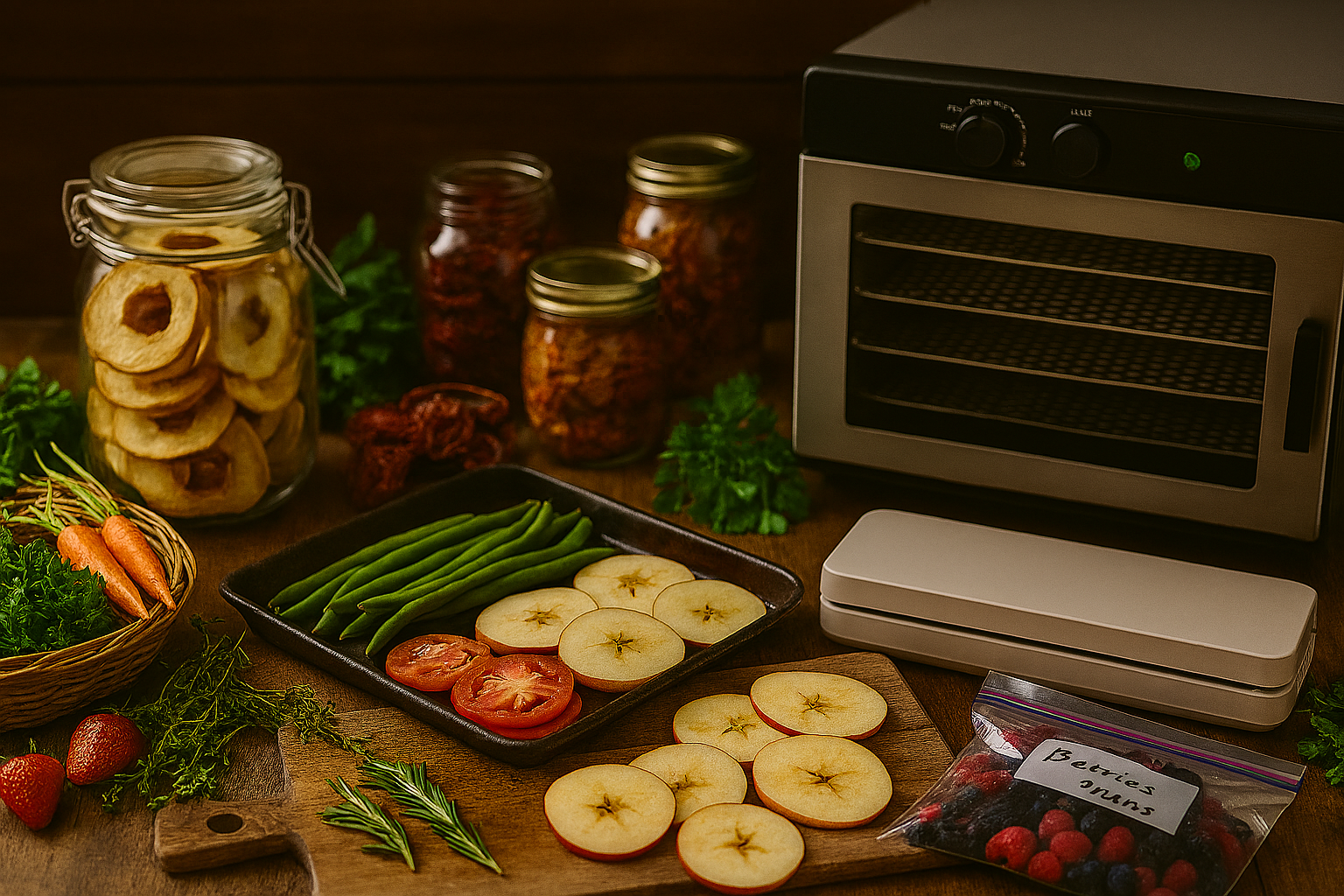 Stripped screws and bolts are a pain for anyone who tackles DIY projects, repairs, or maintenance jobs around the house. One minute you’re breezing through a fix, and the next you’re stuck with a screw head that won’t budge. No matter how hard you turn the screwdriver, it seems welded in place. When the grooves are worn down, it feels like you’re out of options, but with the right tricks and tools, almost any stripped fastener can be removed without wrecking your project.
Stripped screws and bolts are a pain for anyone who tackles DIY projects, repairs, or maintenance jobs around the house. One minute you’re breezing through a fix, and the next you’re stuck with a screw head that won’t budge. No matter how hard you turn the screwdriver, it seems welded in place. When the grooves are worn down, it feels like you’re out of options, but with the right tricks and tools, almost any stripped fastener can be removed without wrecking your project.
Over time, I’ve faced plenty of stubborn stripped screws, found in bikes, furniture, electronics, and even outdoor decks. Through a lot of trial and error, I’ve figured out what actually works, what’s worth trying, and how to avoid making things worse for yourself. Whether you’re dealing with a screw in wood, metal, or plastic, knowing a few techniques can save the day and keep you from screwing up your project any further (pun intended).
This guide covers practical ways to remove stripped screws and bolts from different materials, shares answers to some frequently asked questions with clear advice, and wraps up with simple steps to help you steer clear of stripped fasteners in the future. By the end, you’ll have a clear plan no matter what type of fastener you’re facing.
Removing Stripped Screws and Bolts: Quick Methods That Work
The best removal method depends on factors like the screw size, how badly it’s stripped, where it’s located, and the material it’s sunk into. Here’s a rundown of the classic approaches I use most often:
- Rubber Band Trick: Stretch a wide rubber band flat over the screw head, press your screwdriver down hard, and slowly turn. The rubber band fills in the stripped grooves and gives your tool more grip.
- Use a Larger Screwdriver: Go up a size or two and use a manual screwdriver (not a power drill). A slightly oversized driver can “bite” into fresh edges of the stripped slot.
- Try Pliers: If the screw head sticks up, grip it firmly with locking pliers like ViseGrips and turn the whole thing out. A pair of needle nose pliers can sometimes work on smaller screws.
- Hammer and Flathead: If you have a Phillips screw that’s stripped, you can sometimes tap a flathead screwdriver straight into the head to carve a new slot, then back the screw out with that. Just use gentle taps so you don’t damage the surrounding area.
- Drill and Extractor: Screw extractor bits are designed for this exact problem. First, drill a pilot hole in the center of the stripped head, then use the extractor in reverse to pull it free. These extractors come in handy for all kinds of stripped fasteners.
These methods cover a ton of stuck screws, but knowing how to work with different materials can really help you get the job done right. Each base (plastic, metal, wood) needs a slightly different approach so you’re not making a small problem worse.
Removing Stripped Screws from Different Materials
Stripped Screw in Plastic
Plastic is a bit fragile, so you can’t use too much force or heat. My favorite trick is to gently tap a flathead screwdriver into the stripped slot, then unscrew it with light pressure. Sometimes, a dab of household super glue put on the tip of the screwdriver (let it dry before turning) gives just enough grip to twist the screw loose. Be patient with plastic—forcing it can easily crack or deform the material.
If the screw is flush or deep and nothing grabs, use a small drill bit to carefully drill out the head until you can separate the parts. Once the part comes apart, use needle nose pliers to twist out the leftover stub. If the stub won’t budge, add a tiny drop of oil to see if you can wiggle it free a little easier. Take your time, as rushing can ruin the plastic part you’re trying to save.
Stripped Screw in Metal
Metal parts, especially electronics or machinery, sometimes take extra finesse. Try using a screw extractor kit—they’re not expensive and often work surprisingly well. Using a manual impact driver can help too: you place it in the stripped slot and give it a sharp tap with a hammer. This combo of downward force and twist can break the screw free with less risk of damaging delicate parts.
Lubricants like WD40 are great for metal screws. Spray some around the screw, wait five minutes, then use pliers or a wide rubber band and driver again. If the screw is really stuck and open, heat from a soldering iron applied for 10–20 seconds can sometimes loosen corrosion or thread lock, making things much easier. Just avoid applying too much heat near electronic parts.
Stripped Screw in Wood
Wood gives you a bit more room to work. First, try the rubber band trick or an oversized flathead screwdriver. If that fails, drill a small pilot hole and drive in a screw extractor. This method tends to work well in wood since the material is forgiving and most extractors are designed to bite into softer bases.
For screws that break off flush or under the surface, I like to use a plug cutter or a drill to widen the hole just enough to grab and remove the screw, then plug the hole with a wood dowel. This saves your project and gives you a fresh place to install a new screw if needed. Sand, glue, stain, and you’re good to go. With patience and the right tools, you’ll barely even notice where the repair was made.
Stripped Screw FAQs
What does a stripped screw look like?
A stripped screw usually has rounded, worn, or flattened grooves where the driver bit is supposed to sit. Instead of neat, sharp slots, you’ll see smoothed-out edges, sometimes almost a circle, where the driver just spins without catching. If your screwdriver keeps slipping or just spins in the screw, that’s a textbook case of a stripped screw.
How do I fix stripped screw holes?
In wood, fill the hole with wood toothpicks (or several, if needed), snip them flush, add a dab of wood glue, and tighten the new screw into that filled hole. For metal, use a thread repair kit like a Helicoil to rebuild the threads. Plastic repairs are trickier; sometimes super glue and baking soda make a strong filler you can drill or screw into once it hardens, but be gentle as it won’t be as solid as real threads.
What’s the best way to get a stripped screw out of metal?
- Apply some penetrating oil like WD40 and wait a few minutes.
- If the screw has any slot left, use a manual impact driver or tap a flathead screwdriver into place and try turning it out.
- If the head is ruined, drill a small pilot hole and use a screw extractor. These are super handy for metal fasteners and almost always get the job done.
- If you can reach it, grip the head with locking pliers and back it out slowly. For small electronics, try soldering a nut onto the screw head and using a wrench for leverage.
How To Avoid Stripping Screws and Bolts
Doing a few things differently helps you avoid stripped fasteners before they cause you grief:
- Use the Right Size Tool: Always match your screwdriver or bit perfectly to the slot. Even a small mismatch makes stripping more likely.
- Apply Steady, Firm Pressure: Press down hard when loosening or tightening, not just sideways turning. Pressure helps the bit stay engaged and reduces slippage.
- Go Slow: Using a hand screwdriver is easier to control than a drill. Power tools are great, but they can slip and round off edges quickly if you’re not careful.
- Lubricate Screws: Adding a drop of oil or soap to threads helps both driving and removing screws, especially in wood.
- Stop If You Feel Slippage: If the driver starts to slip, pause. Forcing it almost always makes things worse. Try a different tool or approach.
Getting in the habit of doublechecking your tools and working slowly pays off in the long run. Even if you end up dealing with a stripped screw, having a few go-to tricks can save your project and your afternoon.
Next Steps: Build Your Stripped Screw Toolkit
If you run into stripped screws often, stocking a few affordable tools will save you headaches. I recommend keeping the following in a drawer or toolbox:
- A pack of screwdrivers of all sizes and types
- A pair of locking pliers (ViseGrips)
- Rubber bands and flathead screwdrivers of various sizes
- A basic screw extractor set
- WD40 or another penetrating oil
- A small drill and a set of assorted bits
With these right by your side, you’re ready for all kinds of stuck fasteners, whether you’re working on a DIY build, fixing up an old bike, or repairing appliances that just won’t cooperate.
Got a weird or stubborn stuck screw? Drop your question in the comments below and I’ll help you troubleshoot it. You can beat those stripped screws with a little knowhow and the right tools on hand.






Leave a Reply